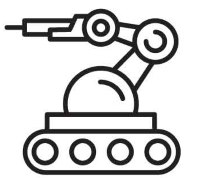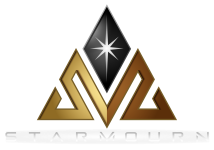What Do We Mean By A Game Economy?
A game economy is about how in-game money flows within the game and how goods get produced.
In Starmourn, we use what's called a faucet & sink economy as far as currency goes, which is how virtually all games with a multiplayer economy work.
Faucet & sink refers to the fact that Marks (our game currency) flow into the game through faucets, and exit the game through sinks.
 So, for instance, when you sell things dropped by a monster and get Marks, that's a faucet that is literally creating Marks out of thin air to give you. Other faucets in Starmourn including selling space junk acquired from ruined ships, hacking missions, and more.
So, for instance, when you sell things dropped by a monster and get Marks, that's a faucet that is literally creating Marks out of thin air to give you. Other faucets in Starmourn including selling space junk acquired from ruined ships, hacking missions, and more.
A sink, on the other hand, is when Marks leave the game entirely. For instance, if you were to buy something from an NPC shop, those Marks disappear forever and are no longer part of the economy.
In terms of how goods get produced, our system is all about extracting raw materials and then turning them into finished goods, sometimes through multiple steps. Let's break that down.
Economies (in-Game)
While this page talks about the economy of Starmourn the game, there's also a formal entity within the world of Starmourn, also called an economy. This can be a little confusing, but bear with us.
In game, an economy can be thought of as an area of influence. For example, in real life, the territory of Earth would be an economy if there was an interstellar community with which to interact financially.
In Starmourn, the Song Dominion is an economy, as is Scatterhome, as is the Celestine Ascendancy.
Economies can get stronger or weaker based on economic activity in them, and tax rates for both manufacturing and storage will vary as a result.
Resources and Goods
Resources are the lowest level of material that exists. They're extracted from the environment (mined, for instance), and listed out in our Resources page.
Goods are things produced from resources and/or other goods. Essentially, anything that is produced in autofactories (see below).
Goods include, but aren't limited to, things like:
- Paristeel and Transteel
- Nanoplastic

- R-glass
- Quantum Power Cells (QPCs)
- Processing Arrays
- Ballistic ammo batteries
- Probes
- Harvest Drones
Some of those, like mines or harvest drones, are finished goods. Others, like nanoplastic or R-glass, are mainly used to make other things.
As an example:
A Harvest Drone requires 1 Quantum Power Cell (QPC), 1 Universal Matter Manipulator (UMM), and 1 Sensor Package.
A QPC requires 1 HDS Astrium, and an HDS Astrium is made from 1 Astrium and 1 Ultarine. There's a similar chain for the UMM and Sensor Package.
Within Goods, there's also a distinction between Stackable Goods and Finished Goods. Stackable Goods and Resources never enter a player's inventory, whereas Finished Goods do. So, for instance, a mine is a finished good, whereas a processing array is a stackable good.
Cargo & Storage
Cargo is the collective name for both Resources and Goods. What distinguishes Cargo from Finished Goods is primarily that Cargo only exists in one of two places: A ship's cargo hold or another kind of storage. Thus, the only way to move cargo from one planet to another is to use a starship.
Cargo Storage
All Cargo has a mass attached to it and is grouped in what are called Standard Cargo Units (SCU), kind of like a shipping container, with an average scale of 1 SCU = 100 tons of mass. (We use mass as a proxy for size for the sake of reducing needless complexity, as we need mass for other purposes, but not size.)
When cargo is stored in a ship, it's vulnerable to seizure as it's possible to destroy starships and then recover some or all of the cargo. Generally cargo in other kinds of storage, such as on factional stations, isn't vulnerable. Secure storage facilities charge an annual fee which varies based on the tax rate of the economy involved and is charged on a per Standard Cargo Unit basis. See below:
Market Order and Offer System
These systems are how people place both orders for cargo and how they put cargo for sale.

A Market Order is:
- An order placed by a player for delivery of X cargo to Y economy at Z price. You're saying, "I want 1500 titanium delivered to my storage in Scatterhome, and I'll pay 50 per titanium."
- It's global, meaning that anyone, anywhere, can see the list of orders and can take that order from anywhere.
A Market Offer is:
- A listing placed in a particular economy saying that you have X cargo for sale at Y price per unit.
- It's local, meaning that someone has to be on a planet or space station in that economy to buy it. Stackable goods or resources automatically go into storage in the buyer's name in that economy.
So, if you're an autofactory owner who needs cargo X, Y, and Z to manufacture something, you could either find out where the goods you need are for sale and go get them, or you could place a market order and thereby pay someone else to bring them to you.
Aside from players placing orders, it should be noted that the game system will also sometimes place orders. For instance, when a ship is destroyed and replaced for you by ship insurance, the Ship Insurance Corp (SIC) will place an order for various cargo based on the specifics of the ship that was destroyed.
What's The Point Of All This?
Much of the design of the manufacturing system was driven by a desire to give people different roles (gathering the raw resources, running autofactories, transporting cargo, trying to pirate transported cargo, and so on) to play vs just having players gather stuff into their inventory and then make it.
By restricting the movement of stackable goods and resources to starships, we ensure that there's a risk to transportation. That risk is mainly player pirates, which we actively encourage in Starmourn. It's a way to create real reasons for players to fly cargo around and thus provide targets for pirates.
It's also a way for great pilots to hopefully show off their skills by being better, whether that's better at destroying other ships or being better at escaping destruction.
These economic systems are also a way to turn the manufacturing of goods into the equivalent of running an in-game business. There'll be winners and losers, and your decisions will mostly determine that. Are your autofactories stuck in economies that are conveniently located but have high tax rates? It's going to be hard to be competitive on price in that case. Are you storing goods in an economy with a low tax rate? That's more sustainable than the opposite and allows you to afford to stockpile inventory so that you can take and fulfill market orders quickly.
These economic systems may continue to change as we implement improvements and additions, but we think they make for great gameplay!
Think we're pretty cool? Tell your friends!
